For 14 years, I dedicated my life to being a labor and delivery nurse. My career defined who I was. I never imagined that, two years ago, my health would force me to officially resign. But, my years of helping deliver babies gives me a unique perspective on capturing new life coming into this world, and birth photography has given me a new purpose.
In 2015, I was diagnosed with a genetic connective tissue disorder. It sent me on a journey of ten surgeries over three years. I was left with a permanent ostomy in 2018, relying on weekly IV therapy via a port in my chest and experiencing other debilitating symptoms. I made the most difficult decision of my life and gave up the profession I had worked so hard for.
I’ve learned to take everything day-by-day. My mission is to break down the stigma of ostomies. And, while it’s not always easy, to show that you can still thrive and live a happy life with chronic illness. As a birth photographer, I strive to portray raw, emotive vulnerability in my images, focusing on the beauty of bringing new life into the world. This offers me catharsis after my own life-altering events.
I believe that art enhances the well-being of individuals, society, and our environment. Photography has given me the power to heal, inspire, provoke, challenge, and offer hope. I found a new purpose that combines both of my passions — childbirth and photography — and I’m happy to share my unique perspective with you. Here are my best birth photography tips:

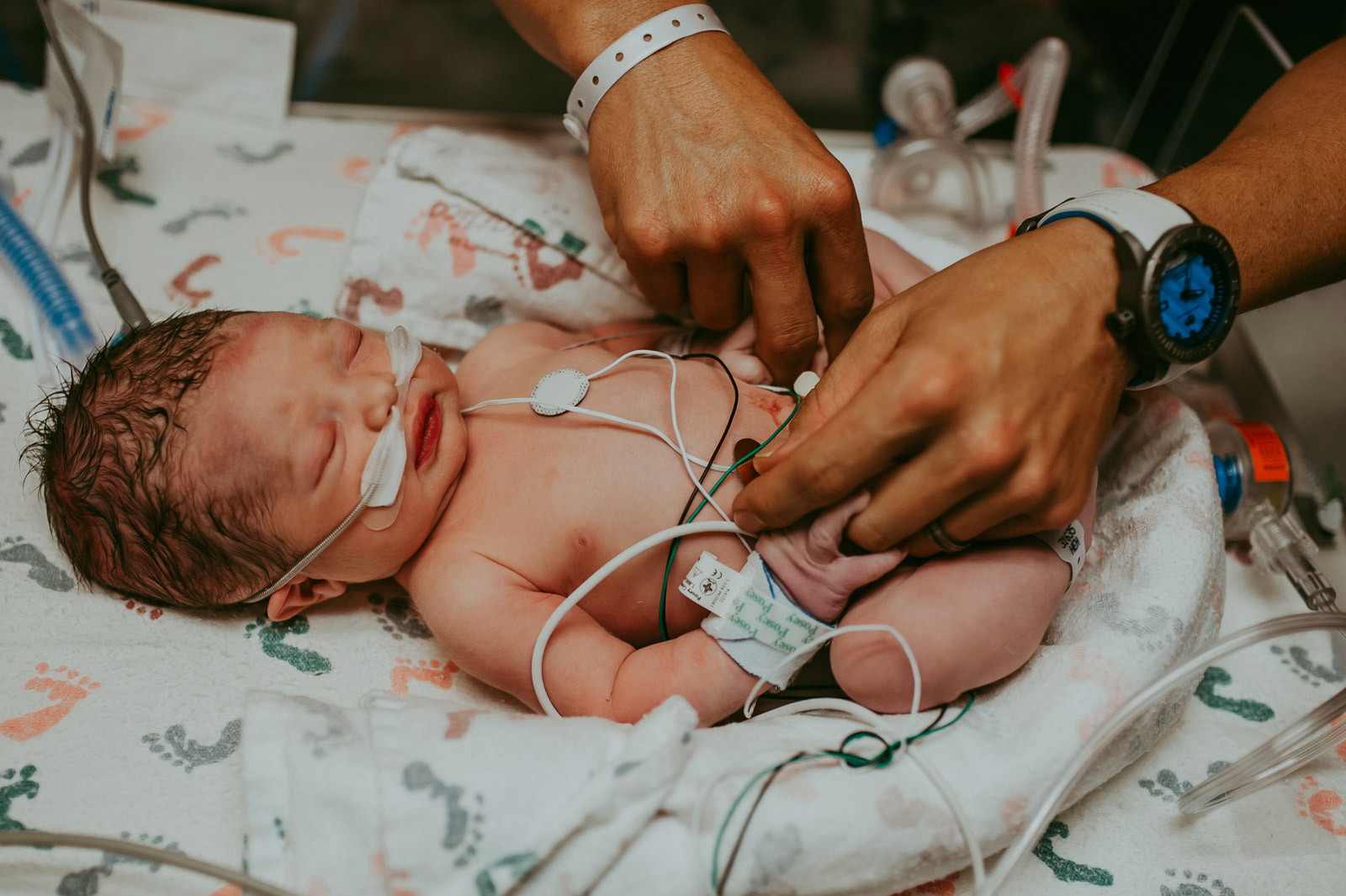
1. Know the hospital’s policies on photography.
When I book a birth photography client, the first thing I request of them is that they discuss the photography plan with their health care provider. This is one of the most important birth photography tips, because every physician and facility has different policies and procedures on photographing a birth, especially during the actual delivery. This is especially important if the client will have a scheduled cesarean section.
2. Be ready when they are.
Once permission is granted, I place myself on call throughout the pregnancy. Many birth photographers wait to go on call until later in the third trimester, but being a former perinatal and infant loss bereavement coordinator who has photographed many miscarriages, premature deliveries, and stillbirths, I make sure I am available whenever my clients may need me.
When I get the request to book other sessions, such as maternity or family, I am sure to let those clients know that I am on call and that my birth clients take priority. I’m very intentional about what I schedule and do not overbook myself.
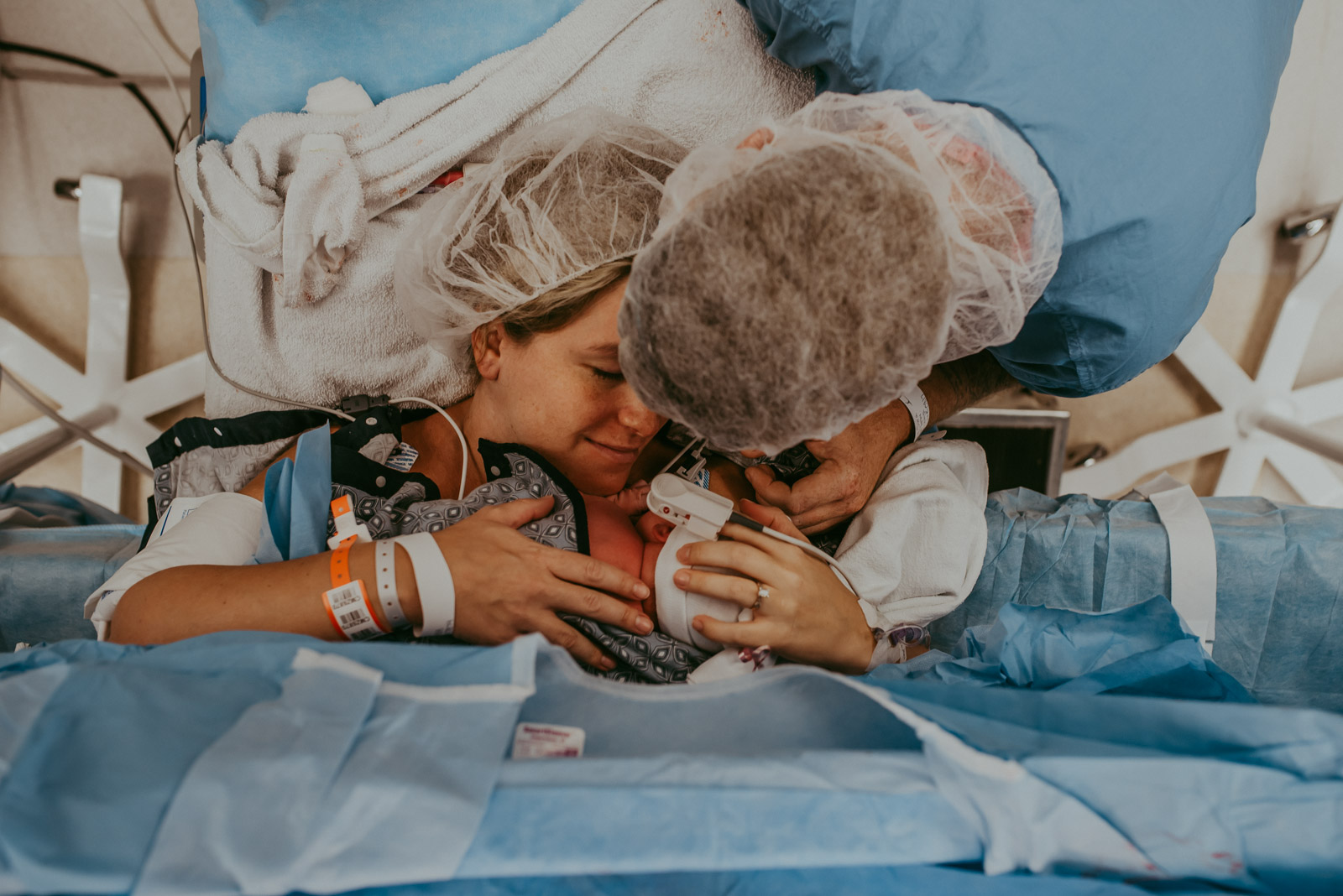
3. Know when to go in.
One of the best birth photography tips I can give you is to figure out when you should go to the hospital, and when you should enter the client’s room.
Once I’m called with a client in potential labor, I wait for them to be evaluated before I make the decision to go to their birth space. Every pregnancy, labor, and delivery is vastly different. Given my background, I am fairly confident at gauging when to go to the birth.
I take several things into account: Is it their first baby or fourth baby? How long were their previous labors? Do they have a scheduled induction or did they go into labor spontaneously? Are they having a scheduled C-section? Are they in active labor and able to walk and talk through their contractions? How often are they contracting? Have their membranes ruptured? Dilation is only one factor among others. Birth is unpredictable, and I’ve had many patients and clients progress very quickly when it was expected to be a long labor and vice versa. I prefer to arrive early and stay longer than risk missing a part of their birth story.
The births I’ve photographed over the past seven years have ranged from three to 16 hours. I generally leave one to two hours postpartum, after baby has done skin-to-skin, been fed, weighed, and measured.
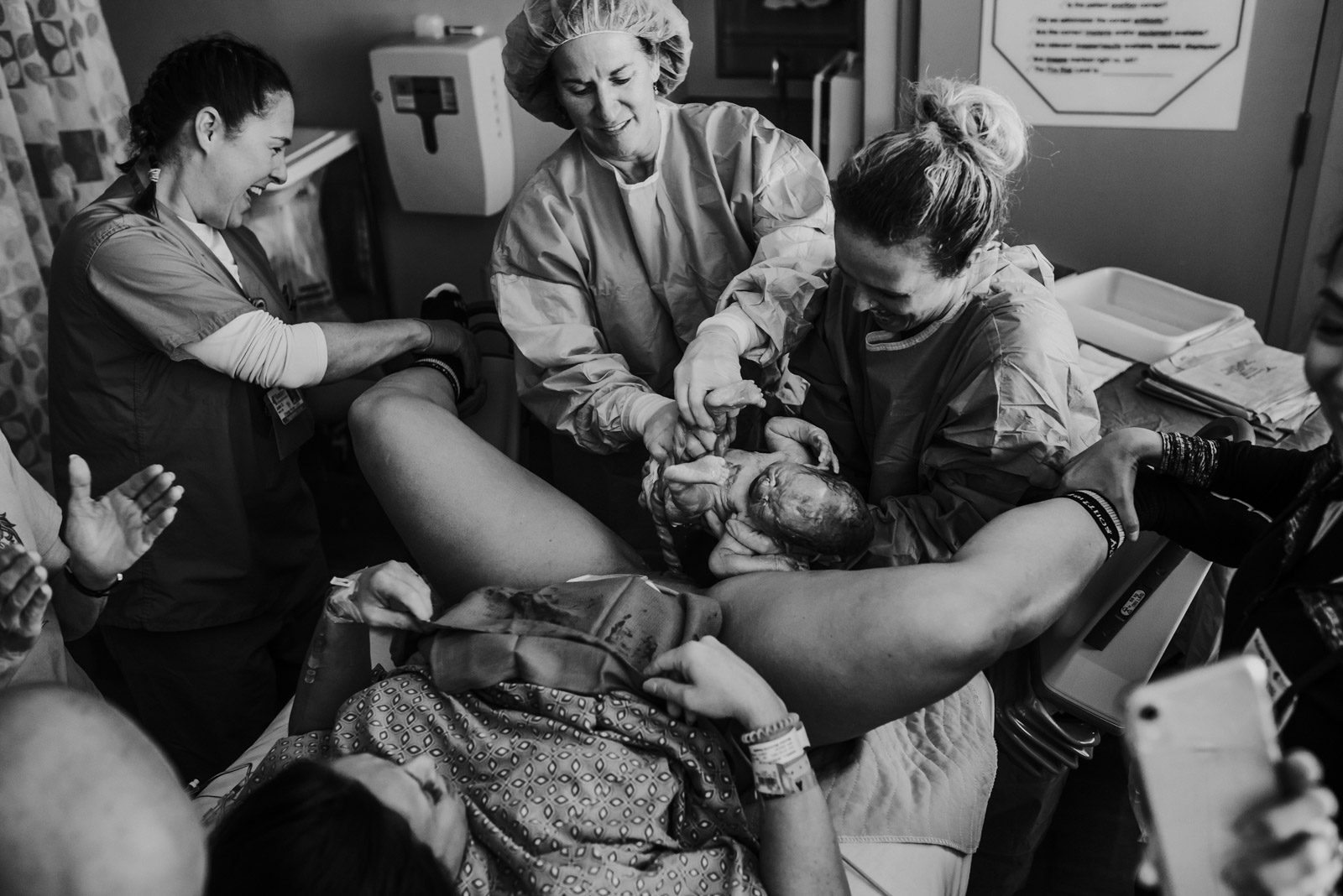
4. Ask your client what they want photographed.
Birth photography is often misunderstood. Many people immediately think of the graphic aspects, or feel that birth is too personal to have photographed. But birth sessions are so much more than the actual photos from the moment of physical delivery. In fact, you don’t need to capture any graphic images; you’re documenting the complete story of the birth.
For this reason, it’s very important to have a clear discussion with your clients on what they want featured and what they consider most worth remembering. It’s also important to ask how they want the second stage of active labor to be documented. Birth photography is the ultimate in documentary storytelling; there is no posing, which is what makes birth photography my favorite genre to shoot.
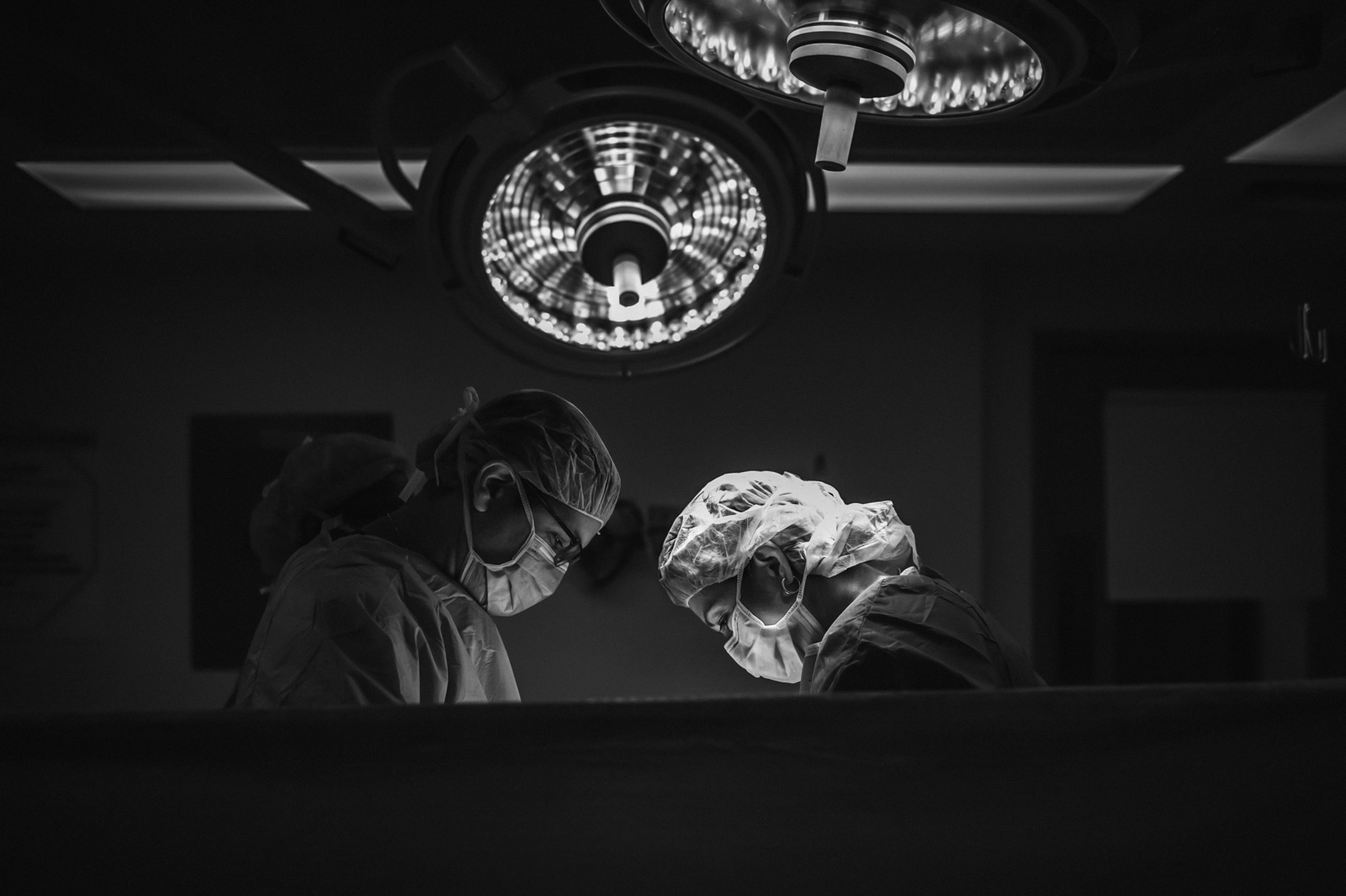
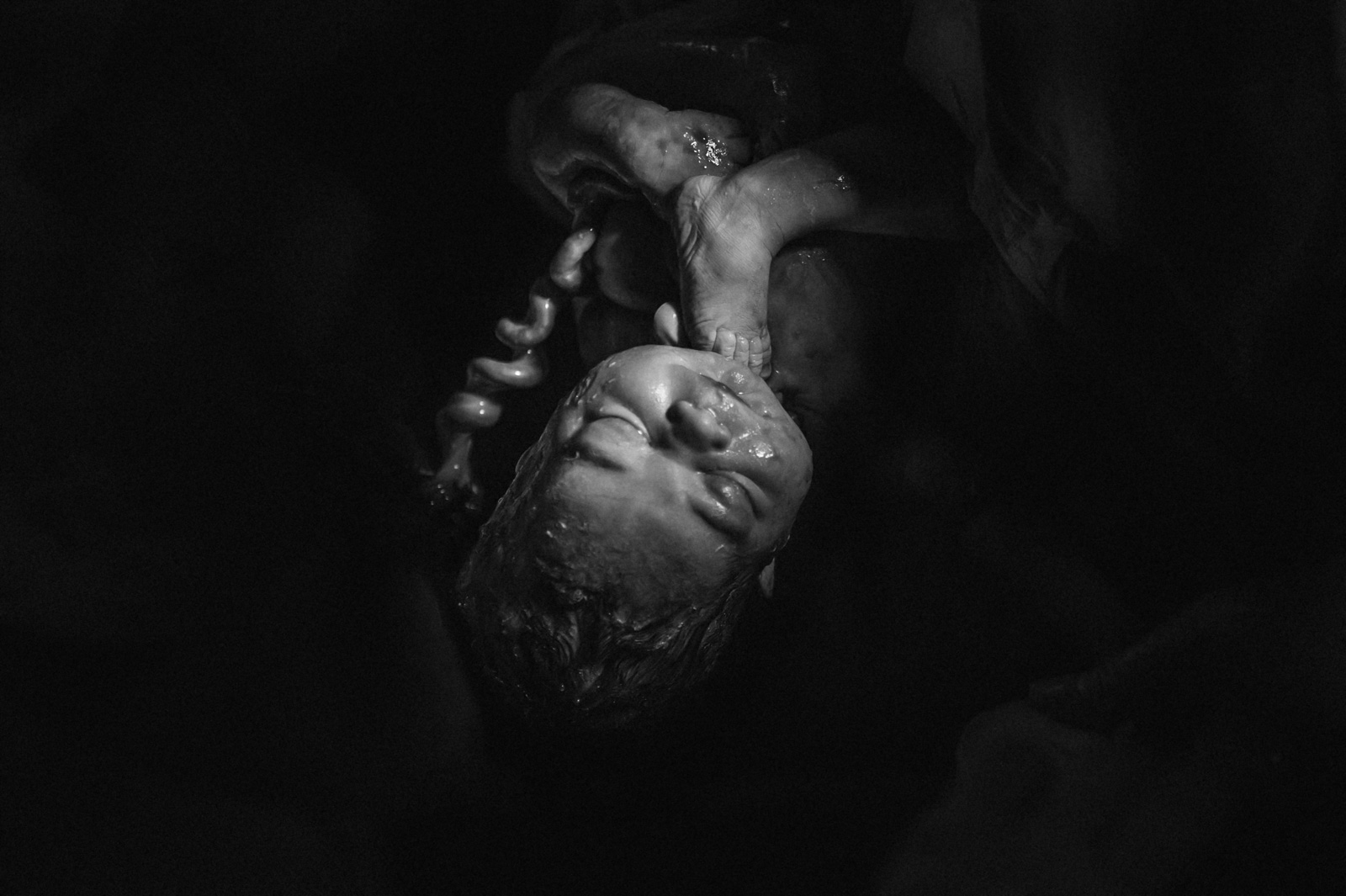
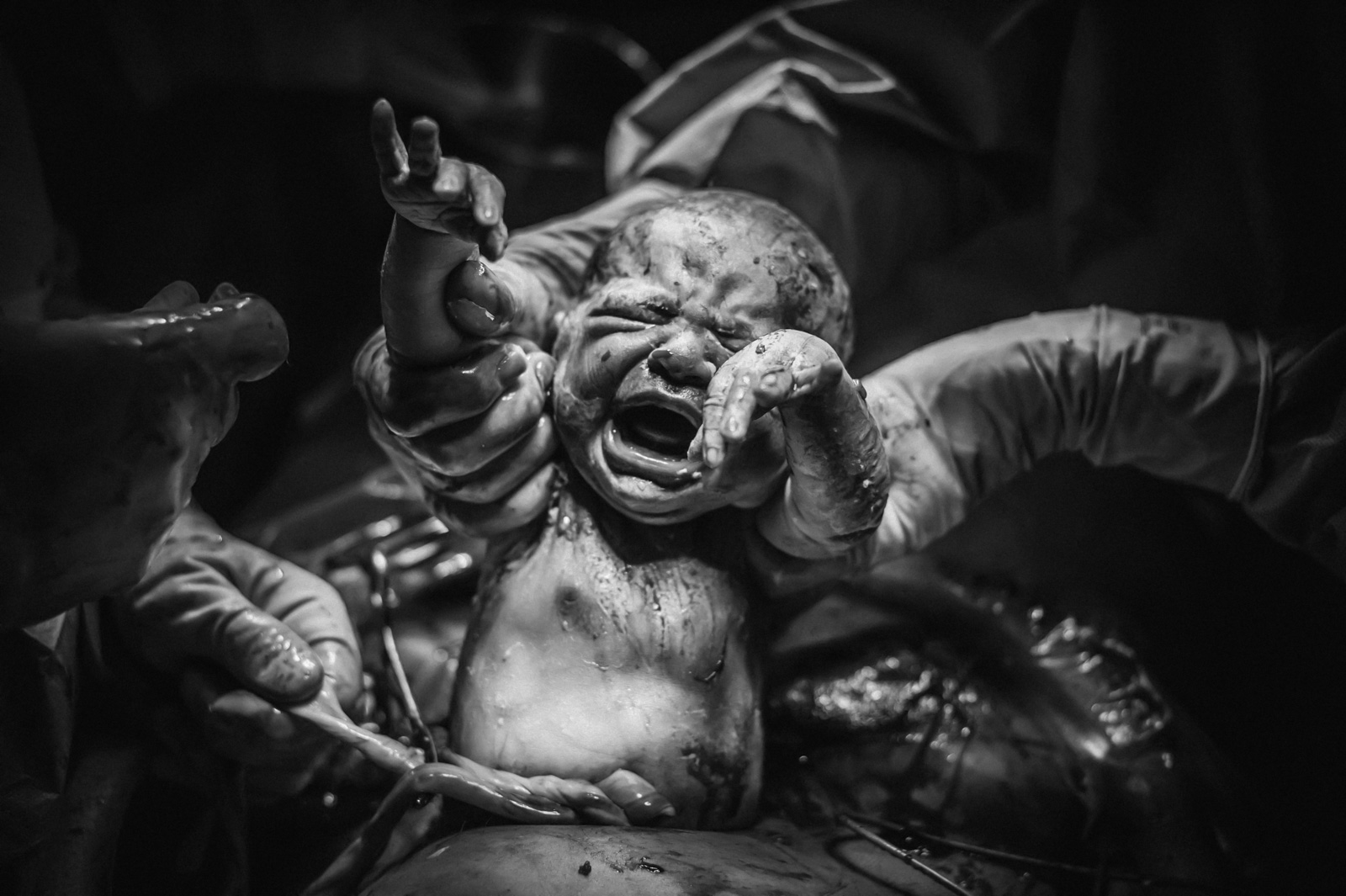
Must-read newborn and birth photography tips & stories for you: The fresh 48: Everything you need to know about hospital newborn photography, How I photographed my own birth story during the pandemic, Want to do something meaningful with your photography? Here’s your chance
5. Be prepared for low light and tight spaces.
I shoot with a Nikon D750. Due to low light situations that often come into play during a birth, it’s important to use a camera that can handle a high ISO. My ideal lens for birth photography is a 35mm. Most delivery rooms are small with limited space, and I often find myself climbing on objects or backing up into the wall to get those wide angle shots.
Personally, I do not use flash during a birth session because I like to be as unobtrusive as possible and do not want to distract the parents or staff. I often ask if I can open the blinds a little to allow some natural light to come into the room if it’s during the day, or I get creative and use other ambient light to get the shots.
I move around as much as possible and take images from many different perspectives. With birth photography, you are unable to set the scene. Nurses, doctors, and technicians are often walking in and out of the room. You cannot ask them to stay out of the way to get the perfect shot, so it’s important to learn to work within the space you have and learn to shoot around them.
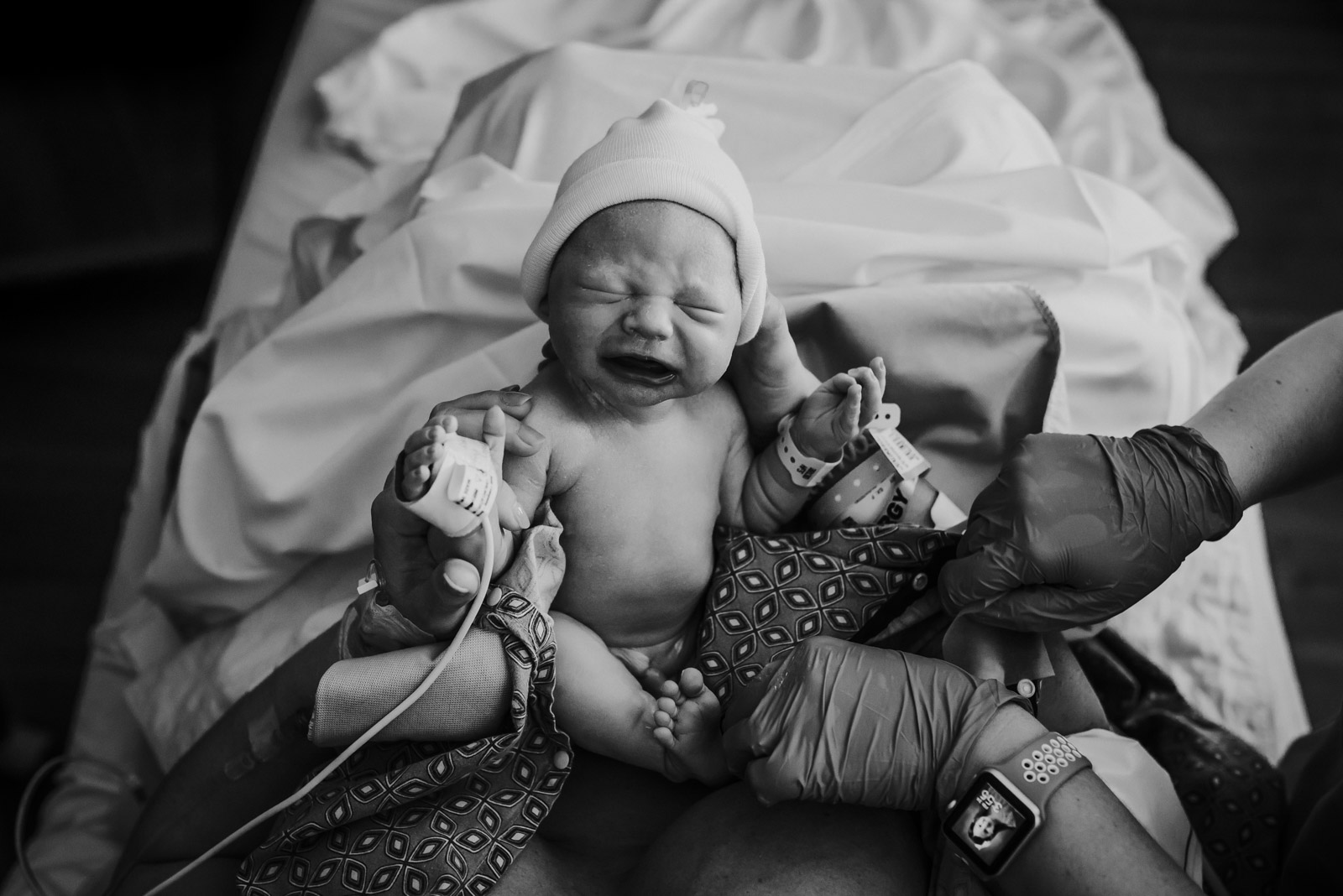
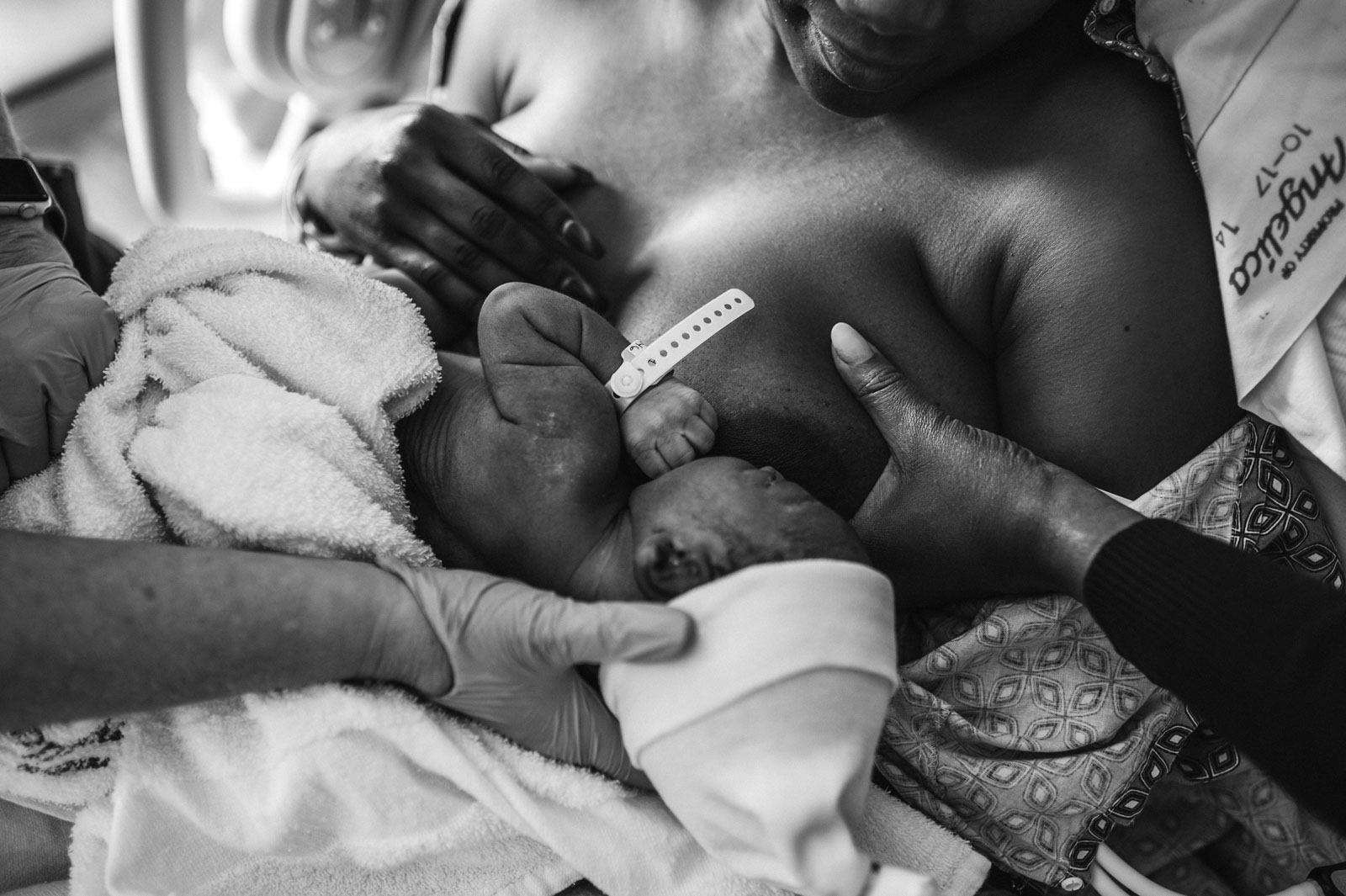
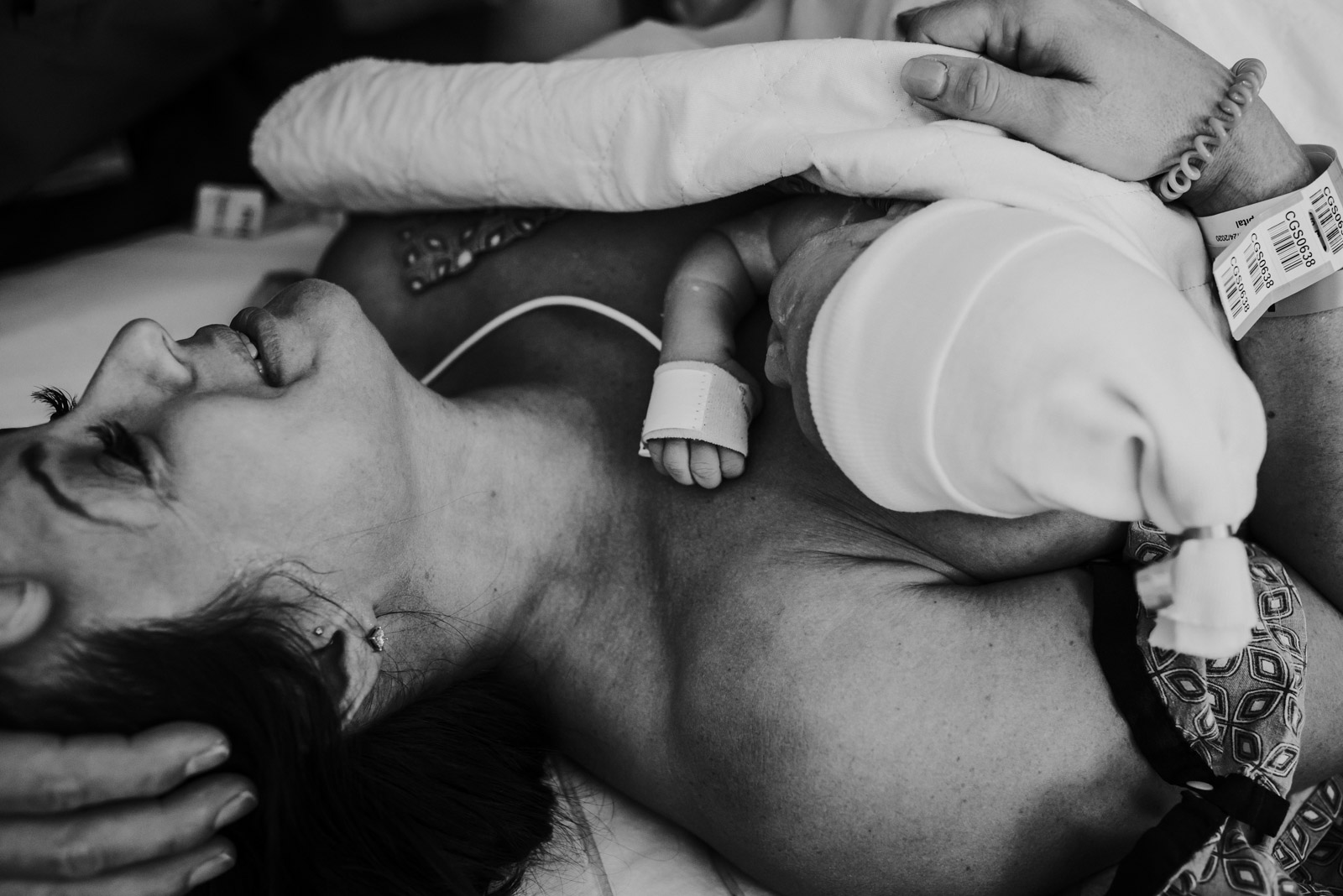
7 Birth photography tips to remember:
1. Have your gear ready. Always have your birth photography bag ready to go at a moment’s notice. Include two camera bodies; you never know if something may happen to one mid-shoot. Make sure you completely charge your batteries and bring a battery charger. It is essential to have a wide angle lens. I primarily shoot with a Sigma 35mm f/1.4 Art, but also bring a Nikon 50mm f/1.4. I bring some personal items such as a soft ivory blanket for some images of baby in crib, a round wooden sign that says “Hello World”, and for myself, snacks such as granola bars, bananas and water.
2. Comfort is a definite must. Not only will you potentially be at a birth for a long time, you will be moving around a lot, climbing on stools and squeezing into tight spaces. I personally wear scrub pants with a photography t-shirt and sneakers. Always bring a sweater as hospitals are notoriously chilly.
3. Get the team on your side. When you arrive, introduce yourself and build a good rapport with staff. Often, they want your clients to have a good birth experience and will make reasonable accommodations for you to get the images you need, such as turning off the spotlight if the situation allows, or putting a stool by the head of the bed for you to get those “from up above” shots.
4. Be as quiet as possible while doing your job. Don’t try to take over in a birth space, and be supportive of your client’s birth plan. This is not a place to interject your own personal opinions, especially to the staff, nor is it the time to ask questions about procedures or medications. You are not there to quiz the healthcare professionals. That is a sure way to not be invited back to document a birth.
5. Know when to stop shooting. Unfortunately, emergencies can and do happen; that’s when you put your camera down and wait until you are told you can resume.
6. After delivery, always follow the baby. More times than not, the baby is placed directly on the client’s chest for skin-to-skin. But if the baby has to be taken to the radiant warmer or NICU and policy allows, go with them. Document those first moments that some parents may miss.
7. Show the whole story. Document all the details and emotions with your birth photography, but do not forget those wide shots are just as important, as they will tie everything together to tell the story.
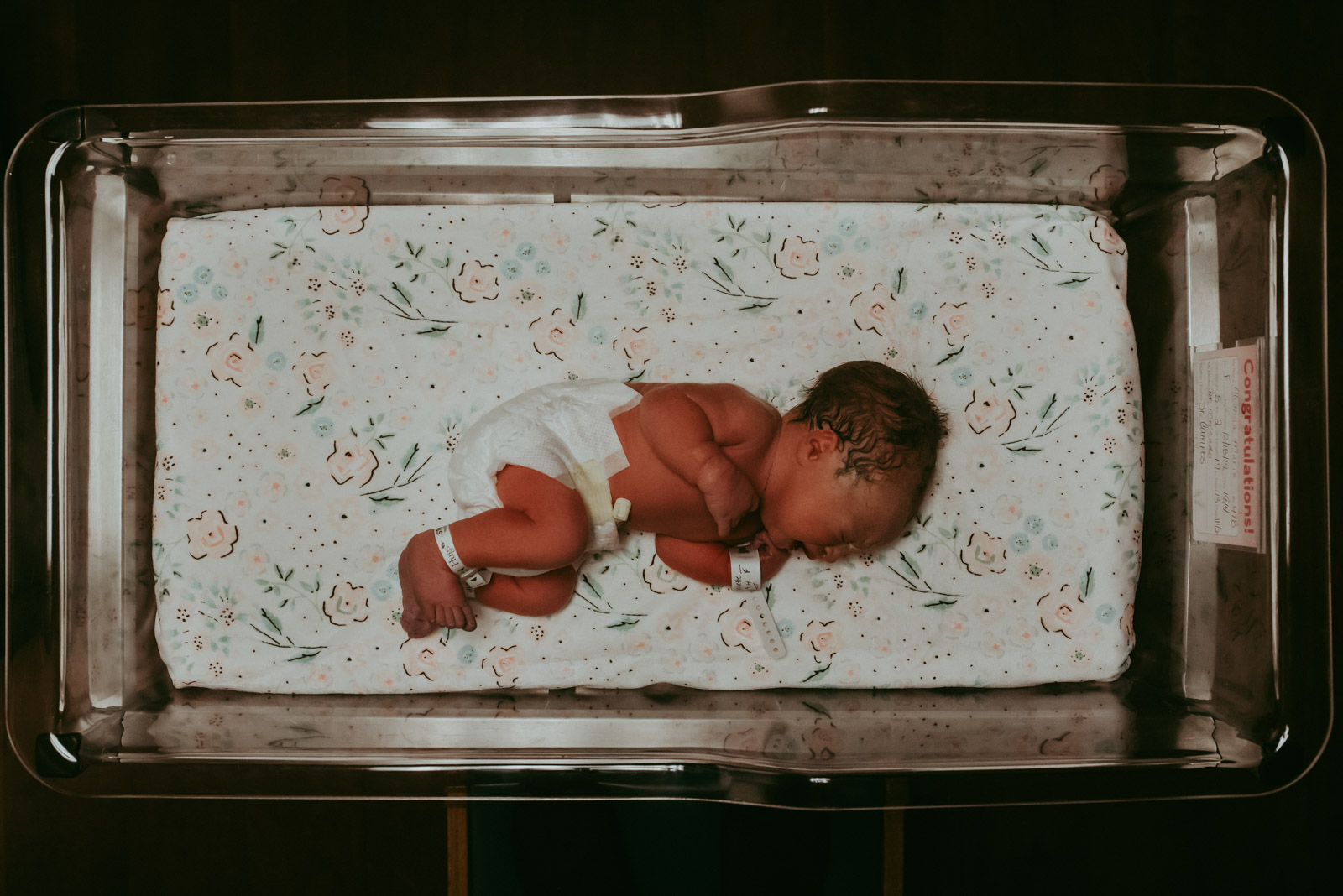
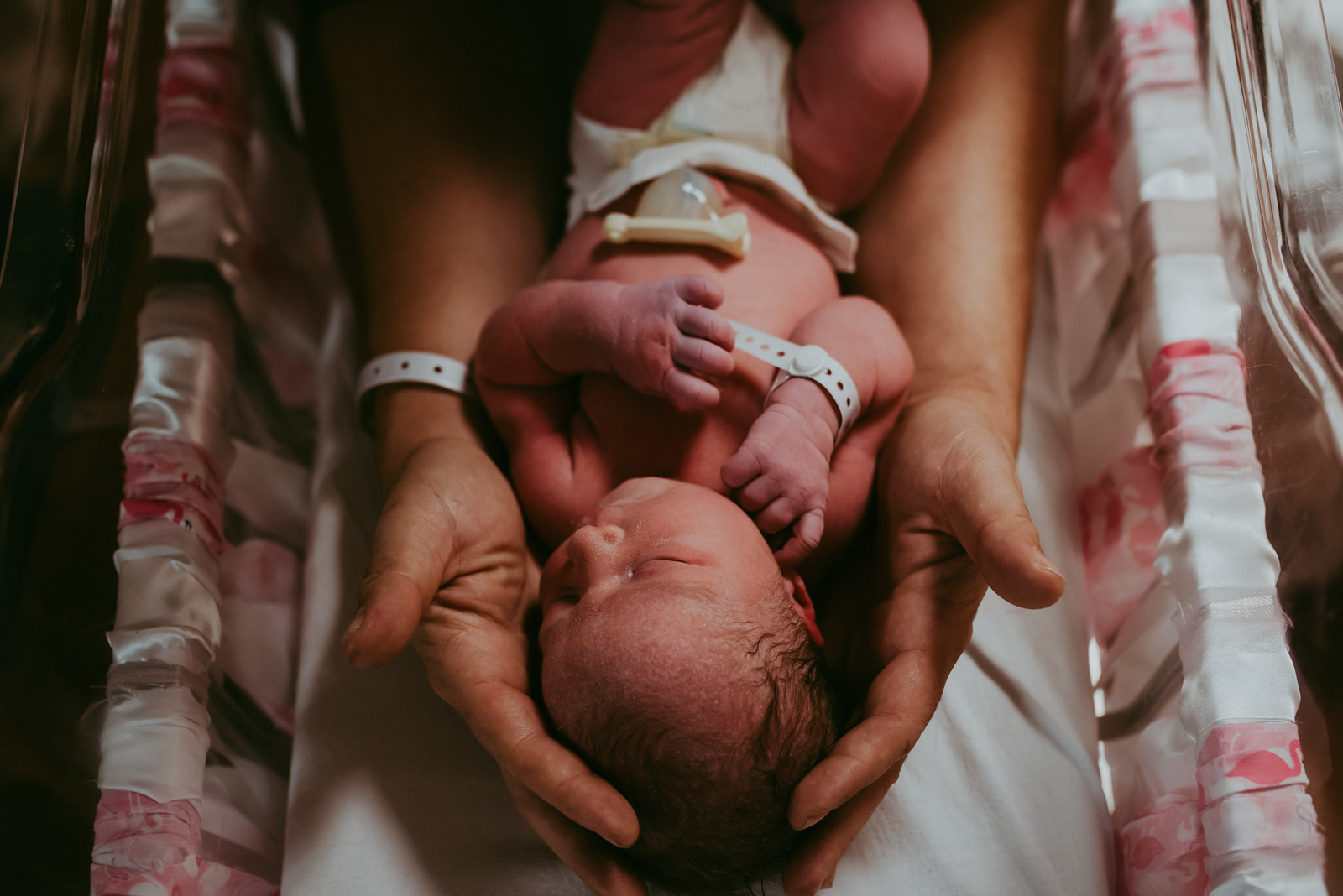
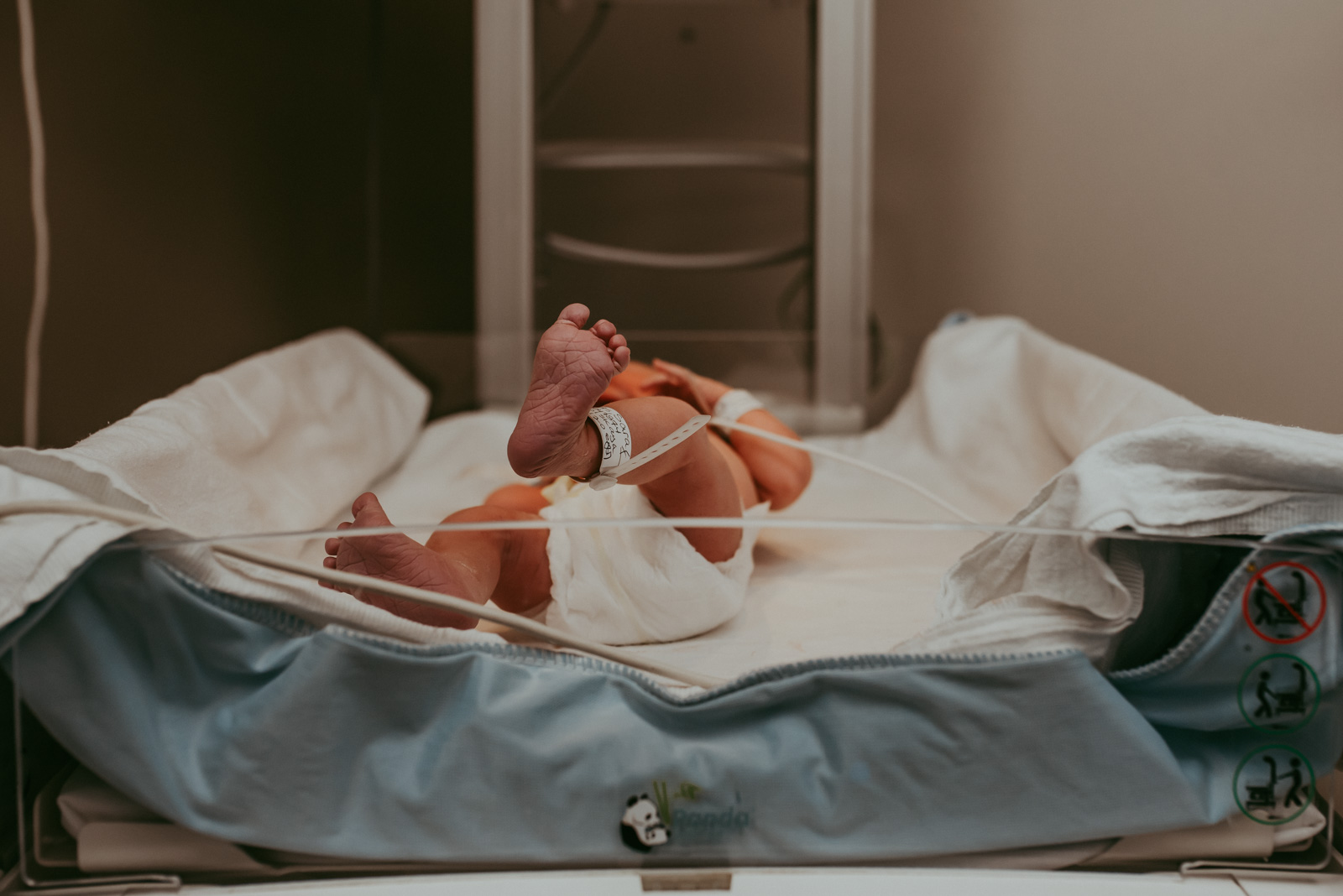
Birth is a raw, beautiful, and magical moment, not to be missed. It deserves to be documented. Many parents are so nervous and focused on what is happening that they forget the small moments. When I return a gallery, I almost always hear from clients that their birth was a blur, and they are so happy to have the birth photos to remind them of how the story unfolded.
Having a birth photographer also allows your partner to be completely present throughout the labor and delivery without having to worry about getting the perfect shot. Where words fail to capture the depth of the moment, a photograph preserves the emotion of your first moments together.
I hope these birth photography tips help you capture the beauty of the moment.
Photos by Jessica Miles

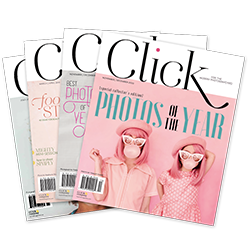

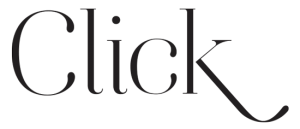
Hi! I stumbled upon this article, and let me say, thank you for being so raw and real. I too, am going though similar health issues and have really stepped into professional photography as an outlet. Thank you for the information, my sister is having her first baby in a few weeks and I wanted to be prepared!
Best
C
Thank you for sharing your story Jessica. My daughter, Renee, had her maternity shoot 2 weeks ago. She lives in Perth W.A. She sent me the link to her photographer, to which totally captivated me. I then wanted to check out birth photographer’s in NZ, and clicked on this link. I am so blown away at your story that is very inspiring.
Renee turns 35 next month and is due to have her first baby on the 4th of May. Due to her having endometriosis, she has experienced 5 miscarriages and 7 operations. So capturing all of this is beyond words. I am very grateful we have woman like you, to capture those miraculous moments. Happy moment making
Thank you so much! I wish her all the best and know things will do wonderfully! Xoxoxo!
Any advice for securing your first birth clients?
Personally for your first or even second, I’d do for free to build a bit of a portfolio. Maybe put out a model call?
I would personally put out a model call and do the first for free or nominal fee to create a portfolio and of course sign a contract!!!
Question: Now that everyone is moving to mirrorless do you recommend getting the Nikon D750 or another camera?
Hi Donna, I photographed one birth on a new Sony Mirrorless and went back to my two Nikon D750’s! Old habits die hard and I still love my Nikon DSLR cameras and I use a 24mm lens most of the time for that last couple years since this was written!
Honestly I photographed one birth with my brand new mirrorless and hated it and went back to my Nikon DSLR! I guess maybe because I’m comfortable with it and you need to change setting very quickly photographing birth.
Love that you did bring a unique perspective to your photography business! Your work inspires me as I recently have resumed photography as a hobby because I am now in the last year of medical school and find that I have more time for photography. Your suggestions are very helpful as I would like to document live , hospital births too. Thank you, blessings
Thank you so very much Maritza! Congrats on almost finishing med school!!!!
Such beautiful images!
These birth photos are amazing!!
Thank you so much Michelle!